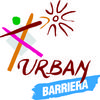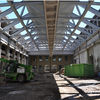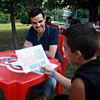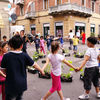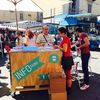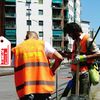Urban Barriera
- Città di Torino
- Regione Piemonte
- Ministero dello sviluppo economico
- Il Fondo europeo di sviluppo regionale (FESR)
URBAN BARRIERA DI MILANO
Urban Barriera è un programma di sviluppo
urbano finalizzato a innescare un processo di
miglioramento complessivo dell’area di Barriera di
Milano, quartiere storico della zona Nord della
città di Torino:
English version
Urban Barriera di Milano
Urban Barriera is an urban regeneration program aimed at triggering an overall redevelopment process involving Barriera di Milano, an historical district of the northern part of Turin. Funded by the City of Turin, the Piedmont Region and the European Union, Urban Barriera deals with physical, economic, social and territorial aspects encouraging cooperation and productive interaction among all the actors and beneficiaries involved in the renewal process.
Urban Barriera is the latest born of the urban regeneration programs implemented by the City of Turin since the mid-nineties, capitalizing on a rich experience in local development and integrated approach (a.i. The Gate Porta Palazzo, Urban 2 at Mirafiori).
Urban Barriera is a Local Development Integrated Program (PISU): the plan, which has a total cost of 35 million Euro, was drawn up by the City of Turin and financed with 20 million Euro by Piedmont Region through the European Funds POR FESR 2007-2013, and through municipal funds or other resources coming from additional agreements with Central and Regional Government for the realization of specific interventions.
Urban Barriera started in the first quarter of 2011.
The program consists in 34 interventions, defined by a process lasted nearly two years, which involved technical staff of the City and public and private subjects from the interested area, that through the activity of Circoscrizione 6 (District 6 Administration) forwarded its instances.
Urban Barriera acts through four intervention axes: physical-environmental, economic-employment, socio-cultural and through a strong communication activity and social support.
Urban Committee
Urban Committee is in charge of the management of all activities and relations with the inhabitants of the district.
The office is in corso Palermo 122, open daily to the public.
Urban Committee is in charge of the management of all activities and relations with the inhabitants of the district.
The office is in corso Palermo 122, open daily to the public.
The area
Barriera di Milano is an historic northern suburb of the city of Turin.
It's an area of about 2.3 square kilometers, with a population of 53.416 inhabitants.
Barriera di Milano is an historic northern suburb of the city of Turin.
It's an area of about 2.3 square kilometers, with a population of 53.416 inhabitants.
AXIS 1 | physical-environmental
Renewal and definition of new functions for public spaces in urban deteriorated areas; improving the standards of public spaces and green areas, stimulating inhabitants to meet and to promote social integration; supporting sustainable urban mobility.
Renewal and definition of new functions for public spaces in urban deteriorated areas; improving the standards of public spaces and green areas, stimulating inhabitants to meet and to promote social integration; supporting sustainable urban mobility.
AXIS 2 | economic-employment
Supporting small and medium enterprises investments; improving the economic infrastructure; strengthening the cooperation between local entrepreneurs for marketing actions; sustaining the employment and the improvement of human and professional resources; reducing school drop‐out; enhancing and evaluating immigrants competences.
Supporting small and medium enterprises investments; improving the economic infrastructure; strengthening the cooperation between local entrepreneurs for marketing actions; sustaining the employment and the improvement of human and professional resources; reducing school drop‐out; enhancing and evaluating immigrants competences.
AXIS 3 | socio-cultural
Promoting the territory through local cultural actions; stimulating active citizenship; activating efficient public services to contrast urban decay, improve citizens’ quality of life and the integration of socially vulnerable groups
Promoting the territory through local cultural actions; stimulating active citizenship; activating efficient public services to contrast urban decay, improve citizens’ quality of life and the integration of socially vulnerable groups
AXIS 4 | communication and local support
Informing with regular updates on the state of implementation of the activities in program and their results; guaranteeing the coordination of interventions; encouraging local inhabitants involvement in the program.
Informing with regular updates on the state of implementation of the activities in program and their results; guaranteeing the coordination of interventions; encouraging local inhabitants involvement in the program.
Extra-program activities
In addition to planned interventions, the Urban Committee works to develop further opportunities and strengthen new relationships with local subjects.
In addition to planned interventions, the Urban Committee works to develop further opportunities and strengthen new relationships with local subjects.



